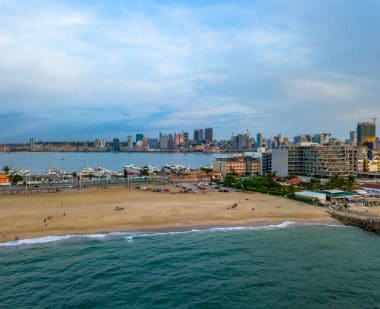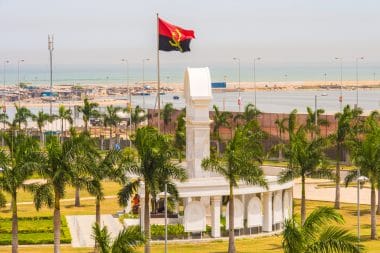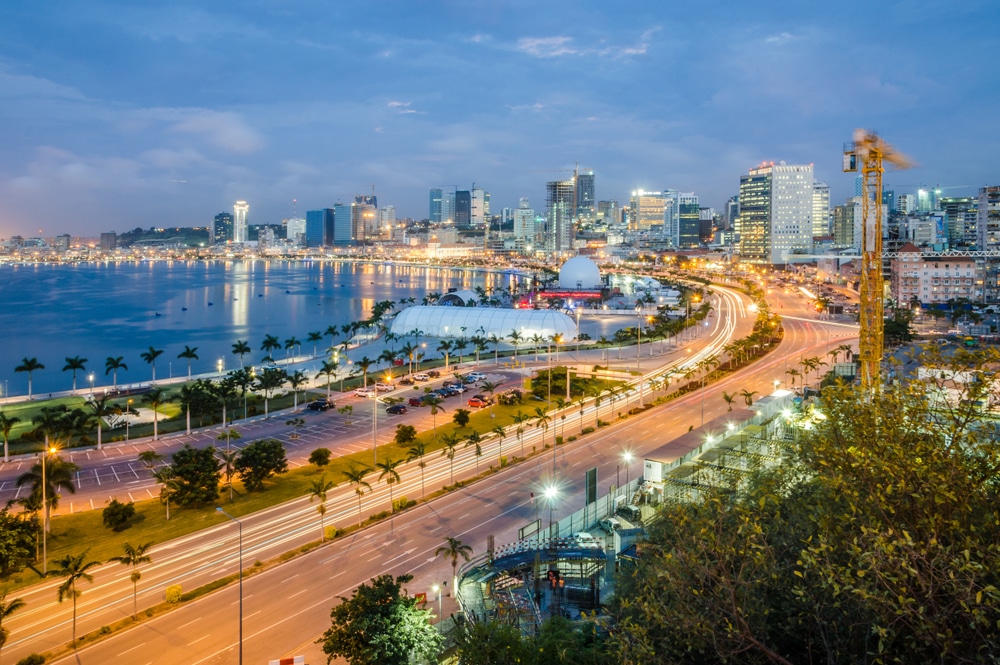Luanda is the name of the newest and hottest place-to-be for a holiday in Africa. The capital of the south-west African country of Angola, located north of Namibia, has 6.9 million inhabitants. The official language is Portuguese and a relic from the five-hundred-year colonial era.
When Angola became the world’s largest oil producer, a construction boom by foreign investors and international corporations began after the end of the civil war in 2002. Within a few years, the capital’s population doubled. Today, Luanda is an African metropolis with international flair and an unmistakable mix of cultures. The location of the city directly on the Atlantic coast knows how to elegantly combine beach holidays and sightseeing.
The climate here is tropical (in other parts of the country also subtropical and tropical-temperate). The average annual temperature is around 24-26 °C. The months from April to October are relatively cool and dry in Luanda. From November to March is the hot, humid and humid time of the year. This period is best suited for a beach holiday. Luanda is an attractive destination all year round due to the climatic conditions.
Beaches in the middle of the city
 On the extensive, white beaches of the Corimba and Benfica districts, locals and tourists enjoy grilled, freshly caught fish served with rice or salad at small beach huts. The local cuisine is also based on seafood, cassava root, corn and poultry; particularly like to be processed into spicy-hot stews. In larger cities like Luanda, you can clearly see Portuguese remnants in the cuisine.
On the extensive, white beaches of the Corimba and Benfica districts, locals and tourists enjoy grilled, freshly caught fish served with rice or salad at small beach huts. The local cuisine is also based on seafood, cassava root, corn and poultry; particularly like to be processed into spicy-hot stews. In larger cities like Luanda, you can clearly see Portuguese remnants in the cuisine.
Portuguese and Brazilian influences from the time of colonialism and the slave trade are not only expressed in the food. In the old town, the Baixa de Luanda, you can stroll through narrow alleys near the harbor, past architecturally fascinating, old buildings in colonial style and relics from the socialist phase of the seventies and eighties.
Mixed with the original African traditions, this creates a sparkling, unique cultural flair. Kuduro is a musical genre from the Sambizanga district and is one of the city’s most important cultural assets. Kuduro can best be described as a rousing mixture of Caribbean rhythms such as calypso, African percussion and techno beats.
The port is the largest and most important in the country. To call it gigantic would be an understatement. From here, crude oil, clothing, vehicles, diamonds, iron ore, coffee and fish products are exported all over the world. At the gateway to the world, the Atlantic wind blows the inkling of freedom through your face like a fresh breeze.
Attractions in Luanda

The Saõ Miguel fortress, located above Luanda, is now home to the popular National Museum of Military History, which is well worth seeing. If you are interested in the eventful history of the country in addition to militaria, a visit to the “Museu Nacional da Escravatura”, the slavery museum, is recommended. In a chapel on a hill overlooking Luanda, you can learn a lot about the roots of Angolan identity.
The “Palácio de Ferro”, in German: Iron Palace, was probably built by Gustave Eiffel. Today, it houses a cultural centre with a dynamic, young music and theatre scene at its centre.
The “Marginal” waterfront promenade was inaugurated in 2012. It leads, including cycling and jogging routes, in a semicircular arc around the entire Bay of Luanda. Art galleries alternate with cafés or pop-up stores; Palm trees line the magnificent boulevard and complement the impressive view of the skyline. From there, a detour to “Bela’s Shopping Center”, the largest mall in Angola, is a good idea.
The “Autódromo de Luanda” is a race track that regularly hosts car races. The unusual and variable route of the railway is remarkable. Each of the sections is between three and six kilometres long. Attending such a race has cult status in Angola.
One of the most beautiful beaches in Luanda is Sangano Beach. It lies almost virgin with its fine sand at the foot of rugged sandstone cliffs. To end the evening comfortably with a few good drinks, the peninsulas “Ilha do Mussulo” and “Ilha do Cabo” are perfect. The latter is home to Café del Mar and Club Náutico, whose terrace offers wonderful views over the bay, the marina and the skyline.
A visit to the Quiçama National Park, which is particularly rich in animals, is suitable for a day trip. Elephants, giraffes, zebras, wildebeests, antelopes, kudus, ostriches, monkeys, manatees, impalas, waterbucks, crocodiles, turtles and fourteen endemic species cavort on 9600 km². The flora consists mainly of acacias, skunk trees, baobabs and spurge.
Luanda is a testimony to Angola’s eventful history and a prime example of a successful mix of different traditions. The ever-present passion for art and theatre adds a culturally valuable touch to the holiday. An exciting gastronomic offer in combination with scenic highlights and African joie de vivre guarantee a holiday that is hard to beat in terms of exoticism. At the same time, every comfort is guaranteed by a sustainable tourist infrastructure. A holiday in Luanda caters to all preferences.


